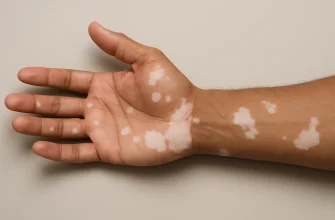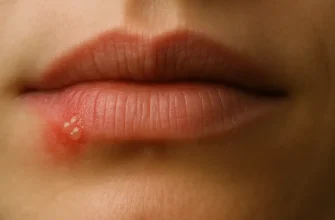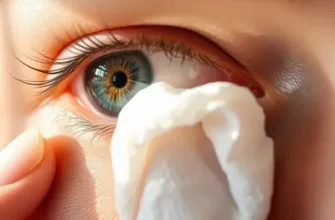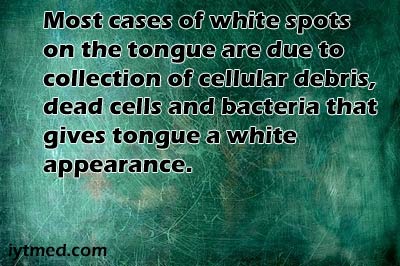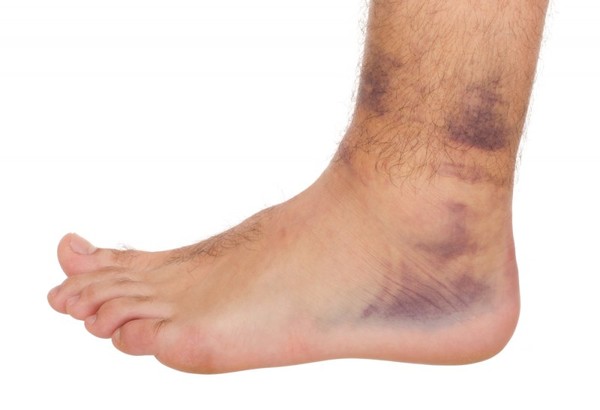White spots on the skin—clinically known as hypopigmented or depigmented patches—can be a cosmetic concern or a sign of an underlying condition. These spots may appear on the face, arms, back, or legs, and can vary in size and shape. While often harmless, persistent or spreading white spots may indicate a need for professional evaluation.
Top 10 Causes of White Spots on Skin Worldwide (2024)
| Cause | Prevalence (%) |
|---|---|
| Vitiligo | 35% |
| Tinea Versicolor | 20% |
| Pityriasis Alba | 15% |
| Eczema | 10% |
| Psoriasis | 6% |
| Idiopathic Guttate Hypomelanosis | 5% |
| Lichen Sclerosus | 3% |
| Post-Inflammatory Hypopigmentation | 2.5% |
| Nutritional Deficiencies | 2% |
| Sun Damage | 1.5% |
This chart highlights the leading global causes of white spots on skin as of 2024. Vitiligo is the most common, followed by fungal infections like Tinea Versicolor and non-infectious conditions such as Pityriasis Alba and Eczema. Understanding these causes helps guide proper diagnosis and treatment strategies worldwide.
Common Causes of White Spots on Skin
1. Vitiligo
- What it is: Vitiligo is a long-term autoimmune skin disorder in which the immune system mistakenly attacks and destroys melanocytes—the cells responsible for producing pigment in the skin. As these cells die off, the affected skin loses its color and turns white.
- Why it’s serious: While not painful or contagious, untreated vitiligo can lead to progressive spread of white patches, psychological stress, and increased risk of sunburn and skin damage. In some cases, it may also signal other autoimmune diseases like thyroid dysfunction.
- Typical signs: Look for milky-white, sharply defined patches of skin that are usually symmetrical and appear on hands, feet, elbows, around the eyes or mouth, or genitals. Hair in the affected areas may also turn white (leukotrichia).
- How to tell it apart: Unlike fungal infections, vitiligo spots are not scaly or itchy. They don’t change with antifungal creams. Also, their borders are often smooth and sharply demarcated.
- Stats: Affects about 1% of the global population—estimated 2–3 million people in the U.S. alone.

2. Tinea Versicolor
- What it is: A common superficial fungal infection caused by an overgrowth of Malassezia yeast, which normally lives on human skin.
- Why it’s serious: It’s not dangerous or painful, but if untreated, it can spread across large skin areas, cause noticeable color changes, and potentially recur frequently, especially in warm and humid environments.
- Typical signs: White, pink, or light brown flaky spots mostly on the chest, back, shoulders, or upper arms. Spots may merge into large patches and become more visible after sun exposure.
- How to tell it apart: The spots have a fine, powdery scale that flakes when scratched—this feature distinguishes it from vitiligo, which has no scaling. Also, tinea spots are more irregular and not usually symmetrical.
- Who’s at risk: Teens and young adults, especially in humid climates or those who sweat a lot (like athletes or beachgoers).

3. Idiopathic Guttate Hypomelanosis (IGH)
- What it is: A benign condition characterized by small, flat white spots caused by a decrease in melanocyte activity, typically due to chronic sun damage.
- Why it’s serious: It’s not dangerous or painful, but can be permanent and cosmetically distressing. Over time, more spots may develop, especially with continued sun exposure.
- Typical signs: Tiny (2–5 mm), round or oval white spots, most often appearing on the shins, forearms, and sometimes shoulders.
- How to tell it apart: Unlike tinea versicolor, these spots are smooth, not flaky, and remain unchanged in shape and size for long periods. They don’t respond to antifungal or steroid treatments.
- Age factor: Most common in individuals over 40, especially those with lighter skin and high sun exposure history.
4. Post-Inflammatory Hypopigmentation
- What it is: A condition where the skin loses pigment after inflammation or injury, such as eczema, acne, burns, or other rashes.
- Why it’s serious: It usually fades over time, but persistent cases can be cosmetically upsetting and mistaken for vitiligo. Without proper care, inflammation can recur, making it harder to repigment.
- Typical signs: Lighter patches that match the shape of a previously irritated or inflamed area of skin.
- How to tell it apart: Unlike vitiligo, the patches are often irregular in shape and coincide with recent skin trauma. The borders are not sharply defined, and the spots usually return to normal over time.
- Who’s at risk: Individuals with darker skin tones or those prone to inflammatory skin conditions.
5. Nutritional Deficiencies
- What it is: Deficiencies in key vitamins and minerals—especially B12, D, calcium, or folic acid—can lead to changes in skin pigmentation.
- Why it’s serious: If untreated, these deficiencies can lead to nerve damage, fatigue, anemia, and worsening of skin conditions. White spots may spread or deepen in color over time.
- Typical signs: White or pale patches, particularly on arms or legs, combined with other systemic symptoms like fatigue, brittle nails, numbness, or hair loss.
- How to tell it apart: These spots improve with dietary correction or supplementation. Unlike vitiligo, they are not sharply defined or purely white, and there’s usually a broader pattern of body-wide symptoms.
- Who’s at risk: Vegetarians, older adults, people with malabsorption disorders, or those with limited sun exposure.
Top Nutritional Deficiencies Causing White Skin Spots
| Nutrient | Prevalence (%) |
|---|---|
| Vitamin B12 | 40% |
| Vitamin D | 25% |
| Zinc | 15% |
| Copper | 10% |
| Iron | 10% |
This chart outlines the most common nutritional deficiencies that can lead to white skin spots. Vitamin B12 and D deficiencies are the leading contributors, followed by trace minerals like Zinc, Copper, and Iron. Addressing these deficiencies through diet or supplementation can significantly improve skin health.
How Are White Spots Diagnosed?
A dermatologist will evaluate the affected area using:
1. Wood’s Lamp Examination
- How it works: UV light reveals changes in pigmentation.
- What the patient feels: Painless, non-invasive, feels like a gentle flashlight scan.
- Time to results: Immediate.
- Accessibility: Widely available in dermatology offices.
- Accuracy: 8.5/10.
- Cost: Around $50–$100 (USD).
2. Skin Biopsy
- Purpose: Examines cellular structure for autoimmune or fungal causes.
- What the patient feels: Mild pinch or pressure from a local anesthetic injection; slight soreness after.
- Time to results: 3–7 days depending on the lab.
- Accessibility: Requires a dermatology clinic or outpatient procedure setting.
- Accuracy: 9.5/10.
- Cost: $150–$400 (USD), depending on lab.
3. KOH Test (Potassium Hydroxide Test)
- Used for: Diagnosing fungal infections like tinea versicolor.
- What the patient feels: Skin scraping with a blunt edge—uncomfortable but not painful.
- Time to results: Within 30 minutes.
- Accessibility: Easily done in most dermatology practices.
- Accuracy: 8/10.
- Cost: Around $30–$60 (USD).
4. Blood Tests
- Why needed: To detect autoimmune disorders or vitamin deficiencies.
- What the patient feels: A quick needle stick, similar to routine bloodwork.
- Time to results: 2–5 days depending on the tests ordered.
- Accessibility: Available through primary care, dermatologists, or lab centers.
- Accuracy: Varies by test, generally 8–9.5/10.
- Cost: $100–$250 (USD).
Treatment Options: From Creams to Lasers
Top Dermatological Treatments for White Spots (2024)
| Treatment | Usage (%) |
|---|---|
| Topical Steroids | 30% |
| Phototherapy (UVB) | 25% |
| Antifungal Creams | 15% |
| Cosmetic Cover-up | 10% |
| Tacrolimus Ointment | 8% |
| Laser Therapy | 7% |
| Oral Medications | 5% |
This chart showcases the most frequently used dermatological treatments for white skin spots in 2024. Topical steroids and UVB phototherapy lead the list, while treatments like antifungal creams and cosmetic cover-ups remain widely applied for specific causes and aesthetic purposes. Tailored therapies are essential for effective results.
Topical Therapies
- Steroid creams: Often prescribed for autoimmune-related white patches like vitiligo or inflammation. Patients typically feel a light cooling or tingling sensation when applied. These creams reduce inflammation and immune response over 2–4 weeks of daily use. They’re easy to apply but must be used with care on sensitive skin to avoid thinning.
- Effectiveness: 7.5/10
- Cost: $20–$50/month
- Antifungal creams: Like ketoconazole (Nizoral), these are used for tinea versicolor. The patient may feel mild warmth or dryness upon application. Most cases clear up within 1–2 weeks of daily use, especially when paired with a selenium sulfide wash. Easy and well-tolerated.
- Effectiveness: 8.5/10
- Cost: $10–$30
- Calcineurin inhibitors: Such as tacrolimus (Protopic), ideal for delicate areas like the face. Patients often report a slight burning sensation during the first few days. Treatment may last 4–8 weeks, and it’s especially effective for small patches. Application is simple, but adherence is key for results.
- Effectiveness: 7/10
- Cost: $100–$200 (for brand-name)
Light-Based Therapies
- Narrowband UVB phototherapy: Best for vitiligo, this treatment exposes affected skin to a specific wavelength of UV light. Sessions are painless, though some patients feel a mild warmth. Typically done 2–3 times a week for 3–6 months. Noticeable repigmentation starts after 6–8 sessions. Low risk, but commitment is needed.
- Effectiveness: 8/10
- Cost: $50–$150/session
Laser Therapy
- Excimer laser (308 nm): This highly targeted laser treats vitiligo in small areas. Patients may feel a warm or tingling sensation during a session. Treatments are short—usually under 10 minutes—and done 1–2 times a week for 6–12 weeks. Visible improvement is seen after about a month. Requires clinic visits but minimal downtime.
- Effectiveness: 7.5/10
- Cost: $150–$300/session
Nutritional Supplements
- Focus on: Vitamin D, B12, folic acid. These nutrients support skin cell repair and pigment production. Patients can take them as oral tablets or, if deficient, through intramuscular injections. Most people begin to feel improvements in overall energy and skin tone within 4–6 weeks. Easy to follow with daily routines or under physician supervision.
- Effectiveness: 6.5/10 (varies by cause)
- Cost: $10–$50/month
Case Study
A 34-year-old male from Florida noticed small white patches on his chest after a beach trip. A KOH test confirmed tinea versicolor. He responded well to topical ketoconazole and a selenium sulfide wash.
Prevention Tips
- Limit sun exposure to reduce risk of IGH.
- Effectiveness: 7.5/10. Proven to help prevent sun-induced pigment loss.
- Difficulty: Moderate. Requires consistent behavior change, like wearing protective clothing and seeking shade.
- Use broad-spectrum sunscreen daily (SPF 30 or higher).
- Effectiveness: 8.5/10. Shields against UV rays that worsen IGH and other pigment disorders.
- Difficulty: Easy. Apply in the morning and reapply every 2 hours during prolonged exposure.
- Maintain a balanced diet rich in essential vitamins.
- Effectiveness: 7/10. Supports overall skin health and reduces risks linked to vitamin deficiencies.
- Difficulty: Moderate. Needs regular meal planning and possibly supplementation.
- Avoid excessive heat and humidity when possible.
- Effectiveness: 6.5/10. Helps prevent flare-ups of fungal infections like tinea versicolor.
- Difficulty: Variable. Can be tough in warm climates or during travel.
Helpful Table: Causes, Symptoms & Treatments
| Cause | Main Symptoms | Recommended Treatment |
|---|---|---|
| Vitiligo | Symmetrical white patches | UVB therapy, steroids, Protopic |
| Tinea Versicolor | Light, flaky spots on trunk | Antifungal creams, selenium wash |
| IGH | Small spots on arms/legs | No treatment, cosmetic cover-up |
| Post-inflammatory | Pale areas after skin trauma | Steroids, tacrolimus |
| Nutritional Deficiencies | Fatigue, brittle nails | Supplements, dietary changes |
Editorial Advice
White spots on the skin can be as benign as a mild fungal infection or as complex as an autoimmune condition. Self-diagnosing is tempting, but it’s a smart move to see a dermatologist if the spots persist or change. Innovative treatments like excimer lasers and UVB phototherapy have made it easier to manage previously stubborn conditions.
Reyus Mammadli, healthcare advisor, recommends starting with non-invasive diagnostics like a Wood’s lamp exam before moving to more involved procedures. “In my practice, many patients find relief simply by correcting a vitamin deficiency or using the right cream,” he notes. Staying proactive, especially in the summer months, makes all the difference.
References
- American Academy of Dermatology Association (AAD)
Vitiligo: Diagnosis and Treatment.
https://www.aad.org/public/diseases/a-z/vitiligo-treatment - Centers for Disease Control and Prevention (CDC)
Tinea Versicolor – Fungal Diseases.
https://www.cdc.gov/fungal/diseases/tinea-versicolor/index.html - National Institutes of Health (NIH) – MedlinePlus
Idiopathic Guttate Hypomelanosis.
https://medlineplus.gov/ency/article/001479.htm - Journal of Clinical and Aesthetic Dermatology
Post-inflammatory Hypopigmentation: Etiology and Treatment Options.
https://www.ncbi.nlm.nih.gov/pmc/articles/PMC3168291/ - Harvard Health Publishing
Vitamin B12 Deficiency Symptoms and Treatment.
https://www.health.harvard.edu/staying-healthy/time-to-get-serious-about-vitamin-b12

